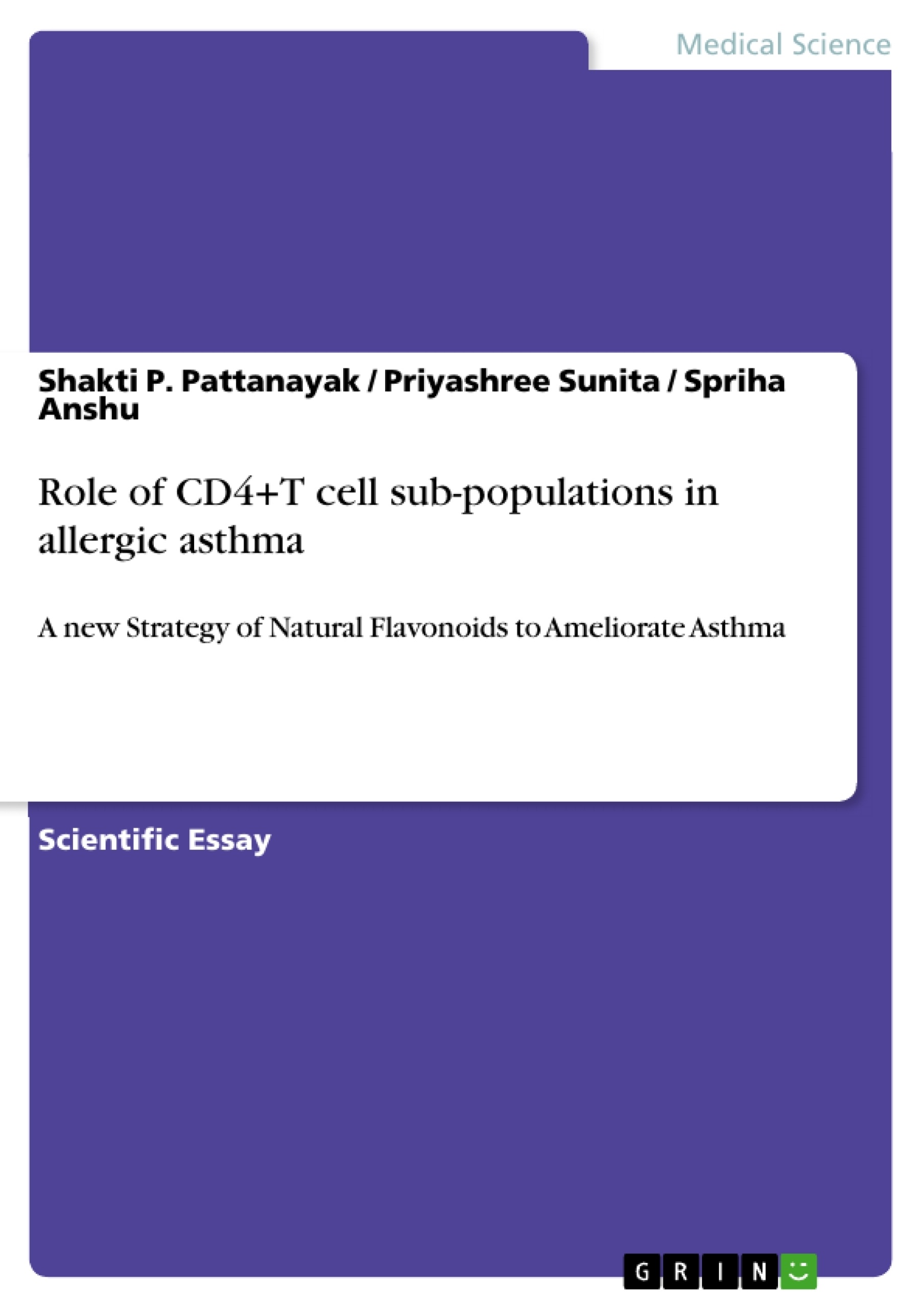Asthma is a chronic disorder specifically characterized by severe inflammation and constriction, mucus hyper-secretion and hyper-responsiveness in the airway. Allergic Asthma (AA) is characterized by discontinuous airway obstruction that may cause temporary to severe asphyxiation and can consequence into death. Airway obstruction in asthma is because of rigorous inflammation concerning multi-cellular components together with eosinophils, neutrophils, CD4+T lymphocytes & mast cells, with eosinophilic infiltration being the most conspicuous feature.
The multifaceted phenotype of AA suggested being elevated from multiple interactions of infiltrating and structural cells that is coordinated by T helper 2 (TH2) cells consequential in chronic airway inflammation. By extremely secreting convinced mediators like interleukin (IL)-4, IL-5, and IL-13, which grasps a key point in asthma pathogenesis cause erratic degree of broncho-obstruction, increased mucus production, and airway remodeling. There are a variety of T cell which plays a significant role in AA that is TH1, TH2, TH17, regulatory T cell, TH3 TH22, TH25, TH9 and others. There are various molecular signaling molecules such as STAT4, FOXp3, GATA-3 and T-bet which regulates CD4+T cells in AA.
Nowadays the approach to manage asthma is based on inhaled bronchodilator and corticosteroids. But the research is on the mechanism of some promising phytomedicines. we summarized here with some mechanisms of some flavonoids to alleviate AA through CD4+T cells. In conclusion, we found that the CD4+T-cell subpopulations played some major contribution in regulating/modulating the AA and interestingly, the natural potent anti-oxidant & anti- inflammatory compounds such as flavonoids could able to attenuate the AA by regulating these subpopulations of CD4+T-cells or the signaling molecules involved in the pathogenesis.
CONTENTS
1. Introduction of Asthma
1.1. Global scenario of asthma
1.2. National perspective of asthma
2. Allergic Asthma (AA)
2.1. Pathophysiology of AA
2.2 Role of immune cells in AA
3. Role of T -lymphocytes in AA
3.1. Role of TH1/TH2 CELL
3.2. Role of TH17 CD4+Tcell in AA
3.3. Role of TH9 and TH25 in AA
4. Cytokines, Interleukins & Interferon-λ in AA
5. Molecular signaling molecules which regulates the CD4+T cells in AA
5.1 STAT4
5.2. FOXP3
5.3. GATA-3
5.4. T-bet
6. Natural Flavonoids
6.1. Flavonoids and AA
7. Conclusion
References
- Citar trabajo
- Shakti P. Pattanayak (Autor), Priyashree Sunita (Autor), Spriha Anshu (Autor), 2016, Role of CD4+T cell sub-populations in allergic asthma, Múnich, GRIN Verlag, https://www.grin.com/document/333928
-

-

-

-
¡Carge sus propios textos! Gane dinero y un iPhone X. -

-
¡Carge sus propios textos! Gane dinero y un iPhone X. -

-
¡Carge sus propios textos! Gane dinero y un iPhone X. -

-
¡Carge sus propios textos! Gane dinero y un iPhone X. -

-
¡Carge sus propios textos! Gane dinero y un iPhone X. -

-
¡Carge sus propios textos! Gane dinero y un iPhone X. -

-
¡Carge sus propios textos! Gane dinero y un iPhone X. -

-
¡Carge sus propios textos! Gane dinero y un iPhone X. -

-
¡Carge sus propios textos! Gane dinero y un iPhone X.

